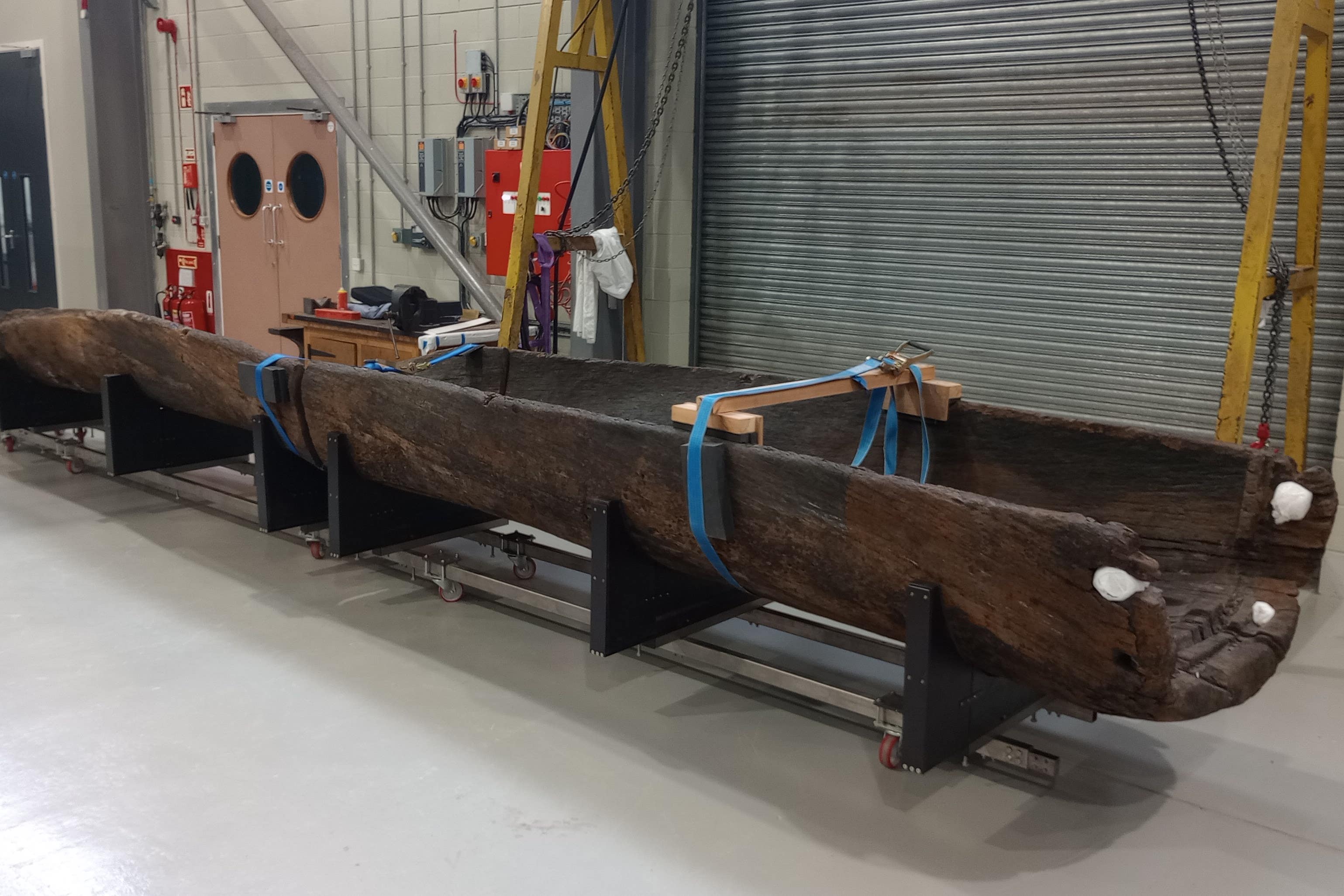Bronze Age logboat moves into new home after conservation work
The Carpow Logboat, which was found on the banks of the Tay in 2006, enters the Perth Museum on Thursday.

Your support helps us to tell the story
From reproductive rights to climate change to Big Tech, The Independent is on the ground when the story is developing. Whether it's investigating the financials of Elon Musk's pro-Trump PAC or producing our latest documentary, 'The A Word', which shines a light on the American women fighting for reproductive rights, we know how important it is to parse out the facts from the messaging.
At such a critical moment in US history, we need reporters on the ground. Your donation allows us to keep sending journalists to speak to both sides of the story.
The Independent is trusted by Americans across the entire political spectrum. And unlike many other quality news outlets, we choose not to lock Americans out of our reporting and analysis with paywalls. We believe quality journalism should be available to everyone, paid for by those who can afford it.
Your support makes all the difference.A 3,000-year-old logboat is moving into its home at a new museum after specialist conservation work to preserve it for the future.
The Bronze Age vessel, found on the banks of the river Tay, had to be warmed up by special electric blankets as part of a year of work to repair and stabilise it.
The Carpow Logboat enters the Perth Museum on Thursday and is one of the first artefacts to move into the building, which will open in spring next year.
The logboat was first officially reported in 2001 when it was spotted in the mudflats at Carpow during a summer of exceptionally low river levels.
It was excavated in 2006 and then spent six years undergoing stabilisation and drying at the National Museums Scotland Collection Centre in Edinburgh.
It was acquired by Perth and Kinross Council but needed further conservation work after 10 years on display at Perth Museum and Art Gallery and returned to the centre in Edinburgh for a year of work.
Charles Stable, artefact conservator at National Museums Scotland, said: “It’s been a privilege to work on this fascinating object, not only when it was discovered, but now in preparation for its redisplay.
“Although it’s large and heavy, it’s also very fragile, making the conservation work rather complex.
“The wood naturally wants to relax and flatten out, so we’ve had to gently warm it up, making it more pliable and allowing us to reshape it.
“I’ve become very familiar with the boat over years of working on it and the small details I’ve noticed are incredible; footrests for the pilot, for example, which really made me think about the people who used it.
“I look forward to seeing it redisplayed and recontextualised in this exciting new space.”
Carved from a single, 400-year-old oak tree trunk, the vessel survived due to the peaty soil composition of the Perth and Tay Estuary area, a unique environment that preserves ancient, organic material that would usually be lost to time.
Radiocarbon-dated to about 1,000 BC, the logboat is considered to be one of the oldest and best-preserved of its kind in Scotland.
Experts said the boat could have been used for a range of purposes, from a cargo craft, fishing vessel, a platform from which to make offerings in the middle of the river, or as a ferry for up to 14 people.
After a decade on display, the wood had started to “unroll” and flatten out.
National Museums Scotland conservators have undertaken delicate reshaping work and crack repairs to stabilise the ancient structure and adapt the display cradle to ensure the object is preserved for future generations.
Specialist electric blankets were used as part of the treatment to warm up the wood before gently bending the fragile structure back to its original shape.
Mark Hall, collections officer with Culture Perth & Kinross, who has been working with the boat since its discovery, said it is very exciting that the vessel has undergone further conservation work “so that it looks its best when we are able again to share with visitors its rich insights into how people have lived with the River Tay.”
Speaking from the museum, JP Reid, senior new projects officer with Culture Perth & Kinross said it is “really exciting” to have the logboat back.
He said: “It’s 3,000 years old and was excavated just a few miles away from here and, considering its age, it is in astonishing condition and, unlike a lot of archaeology that old which is so fragmentary, it’s one of those objects that when you look at it you can see how people would have used it down to the little carved foot rests in the side.
“We are really excited, it is a day that we have been planning for for a long time.”
When the museum opens next year, visitors will be able to view the Bronze Age treasures of Perth such as swords and other metalwork as well as the Stone of Destiny, also known as the Stone of Scone.
Returning to Perthshire for the first time in more than 700 years, the Stone will be the centrepiece of the building and will be free for all to view.
The museum in Perth’s former City Hall will open its doors next year after a £26.5 million redevelopment project.